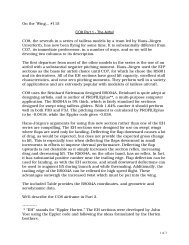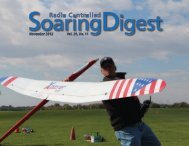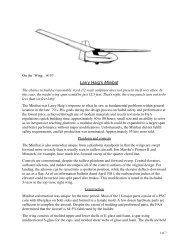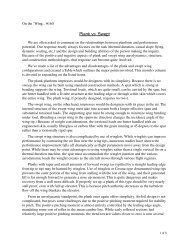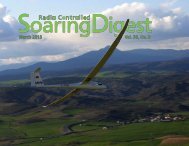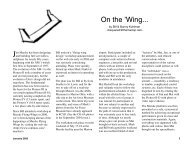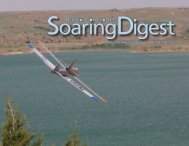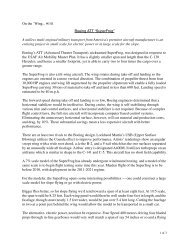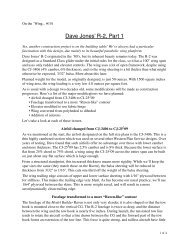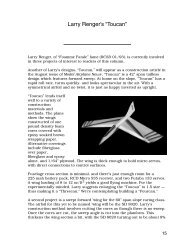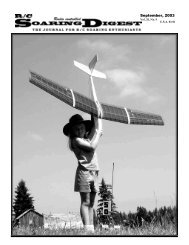Radi C ntr lled - Radio Controlled Soaring Digest
Radi C ntr lled - Radio Controlled Soaring Digest
Radi C ntr lled - Radio Controlled Soaring Digest
You also want an ePaper? Increase the reach of your titles
YUMPU automatically turns print PDFs into web optimized ePapers that Google loves.
42<br />
wind slope machine. I fully expected<br />
them to go straight in the bin after the<br />
first flight.<br />
How wrong could I have been! I<br />
maidened the model with “that looks<br />
about right” co<strong>ntr</strong>ol throws. From the<br />
outset it insti<strong>lled</strong> confidence, feeling<br />
solid in flight, happily scratching around<br />
in the 4 mph draft. Since the maiden it<br />
has proven to be a versatile machine,<br />
comfortably flying in a 20mph breeze.<br />
This success pushed me on. Because of<br />
the rough finish, it seemed logical to use<br />
the model as a test bed so I decided to<br />
try out some flaps. I’d made an attempt<br />
at them on a 100" wing, but lack of<br />
knowledge about sizing and placement<br />
meant when deployed, they gave an<br />
unco<strong>ntr</strong>ollable pitch up. The flaps<br />
extended too far inboard, so a downward<br />
deflection (ahead of the pitch axis)<br />
had the effect of up elevator. As down<br />
elevon at the tips produces a nose down<br />
reaction, I concluded that there must be<br />
a flap size where there is no pitch effect<br />
when deployed.<br />
I needed the input of greater minds<br />
than mine to resolve this one, so I<br />
posted on RC Groups with a request<br />
for design help. Norman Masters came<br />
The 100" wing pre-maiden. This wing is very light but suffers<br />
from flutter at speed. This was the model that I built with the<br />
unsuccessful flap placement.<br />
R/C <strong>Soaring</strong> <strong>Digest</strong>



